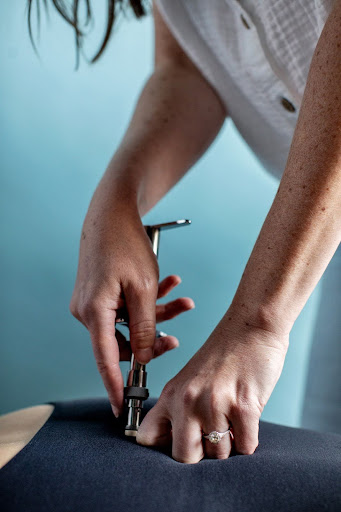Scoliosis isn’t just a diagnosis—it’s a spectrum that can affect posture, movement, and nervous system tone at any age. Whether it’s your 10-year-old starting ballet or you’re noticing a shift in your own posture in your 40s, scoliosis is something worth paying close attention to.
Adolescent Scoliosis in Dancers & Pre-Teens
Young dancers, gymnasts, and athletes often face unique stress on their spines. These repetitive, asymmetrical movements combined with growth spurts can uncover or worsen underlying spinal curves. Pre-adolescents are especially vulnerable, as the spine is rapidly developing and changes in posture may go unnoticed without screening.
That’s why early scoliosis screenings—especially in kids who are active or growing quickly—are so important. Catching changes early can make a big difference in long-term posture, spinal health, and even confidence.
Functional vs. Structural Scoliosis
Not all scoliosis is the same:
- Structural scoliosis is a fixed curve in the spine that involves actual changes to the bones and structure. It often appears in adolescence and may require long-term monitoring.
- Functional scoliosis, on the other hand, results from muscular imbalances, poor posture, leg length differences, or nervous system tension. This type of scoliosis is often reversible or manageable with conservative care—especially when caught early.
The Role of Tone & the Nervous System
Posture and spinal alignment are controlled by the nervous system, specifically the areas of the brain and spinal cord that manage balance, coordination, and muscle tone. When the tone of the nervous system is out of balance—due to stress, subluxations, or injury—it can lead to uneven muscle pull, spinal distortion, and worsening of a curve.
This is where chiropractic care can make a major difference.
Gentle adjustments help regulate nervous system tone, improve communication between the brain and body, and restore balanced movement. Over time, this can help:
- Reduce progression of functional scoliosis
- Improve postural awareness and control
- Support proper development in growing children
- Address imbalances that contribute to pain or instability
Adult-Onset Scoliosis: Why It’s on the Rise
Scoliosis isn’t just a concern for kids. Many adults—especially women in their 40s and 50s—are developing de novo scoliosis, or worsening of undiagnosed curves from childhood. This often coincides with postural fatigue, spinal instability, and changes in nervous system tone.
Without proper care, adult scoliosis can become unstable and painful. Regular chiropractic check-ins help manage alignment, reduce tension, and keep the spine functioning at its best—at any age.
Healthy posture starts with a healthy nervous system. Let’s support it together.
